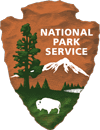MLK Jr. and New Hope Baptist Church
Dr. King's historic visit to Niagara Falls, NY inspired parishioners of New Hope Baptist Church and upcoming civil rights leaders.
On July 22, 1956, Dr. Martin Luther King Jr. spoke at New Hope Baptist Church in Niagara Falls, NY. He was a 27-year-old, Southern Baptist preacher who, along with seamstress Rosa Parks, was one of the driving forces behind the Montgomery Bus Boycott. He had yet to rise to national fame as a leader of the Civil Rights Movement. Dr. King’s visit to the church was incredibly momentous to those in attendance, and it became even more legendary over time.
A year prior, Reverend H. Edward Whitaker invited Dr. King to speak at the newly built New Hope Baptist Church in Niagara Falls. Although Dr. King was unable to accept the invitation, he promised to make good on the offer. Whitaker and King were longtime friends. They had met in seminary school and wrote letters to each other ever since. Similar to King, Whitaker was also on his way to becoming a prominent civil rights leader in Niagara Falls.
In a January 1956 letter from King to Whitaker, the young preacher agreed to speak at New Hope in two months’ time. He ended the letter with a postscript that read: “The bus situation here in Montgomery is keeping me so busy that I hardly have time to breathe.” Indeed, the speaking engagement was delayed until July because of the boycott.
When Dr. King arrived at New Hope, tons of people had gathered to greet him, and the sanctuary was completely packed when he delivered his two sermons. In her later years, Constance Washington could still remember shaking Dr. King’s hand. After her morning shift at a local hospital, the young nurse had rushed over to the church because she didn’t want to miss King’s sermon. “He was a very personable person,” Washington recalled. “When he met you, it was like he had known you forever. It wasn't like he was meeting a stranger.”
During one sermon, Dr. King focused on the Montgomery Bus Boycott. Although Montgomery, AL was about 1,000 miles away from Niagara, Falls NY, the bus boycott was especially important to local residents. As historian Michael Boston points out, most African Americans in Niagara Falls “had migrated from the South, had family in the South, or had heard about racial discrimination prevalent in that region. So it was easy for them to empathize with their southern counterparts.” Additionally, they could use what they learned from national events to address the racial injustice they were experiencing more locally.
Mildred Isom attended both sermons. She was “a longtime member of New Hope Baptist Church and resident of Niagara Falls.” She was so inspired by Dr. King’s speech that she wrote down her thoughts a few days later. Isom’s daughter discovered the letter nearly 50 years later in 2004. “In the letter, Isom reported that the news media was out in force that day. ‘This was one time we really got coverage from the news media,’ she wrote, adding ‘Everybody wanted to see and talk to Dr. King.’” In later years, Black activists in Niagara Falls would credit Dr. King’s historic visit and his leadership as a model for their own activism.
Of course, no visit to the city of Niagara Falls would be complete without seeing the famous cataracts. During Dr. King’s visit, Reverend Whitaker gave his old friend a tour of the city. In her letter, “Isom recalled that [Dr. King] opened his morning sermon by commenting on the city's waterfalls.” He marveled, “I was standing looking at the falls saying ‘what a mystery, just to see what God has made.’” In that moment, one might even say, one legend met another.
Hope L. Russell, Ph.D.


